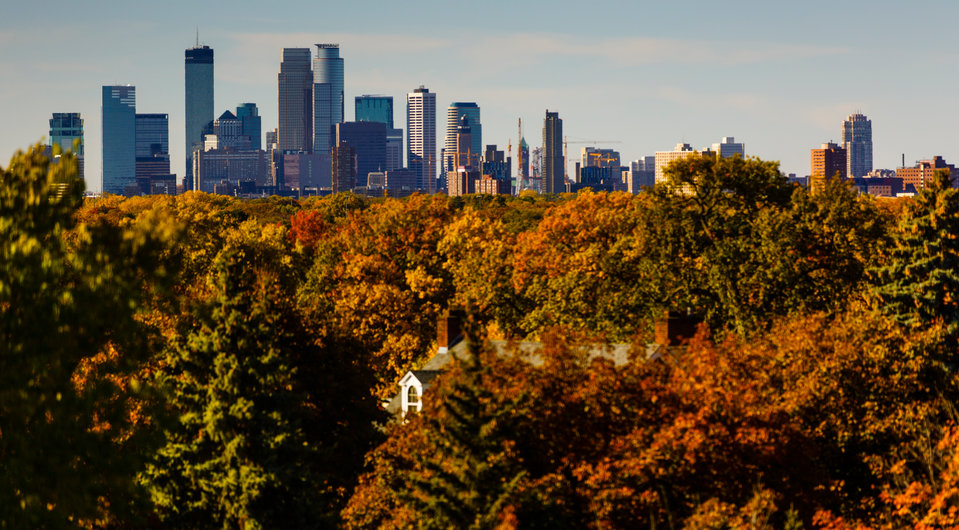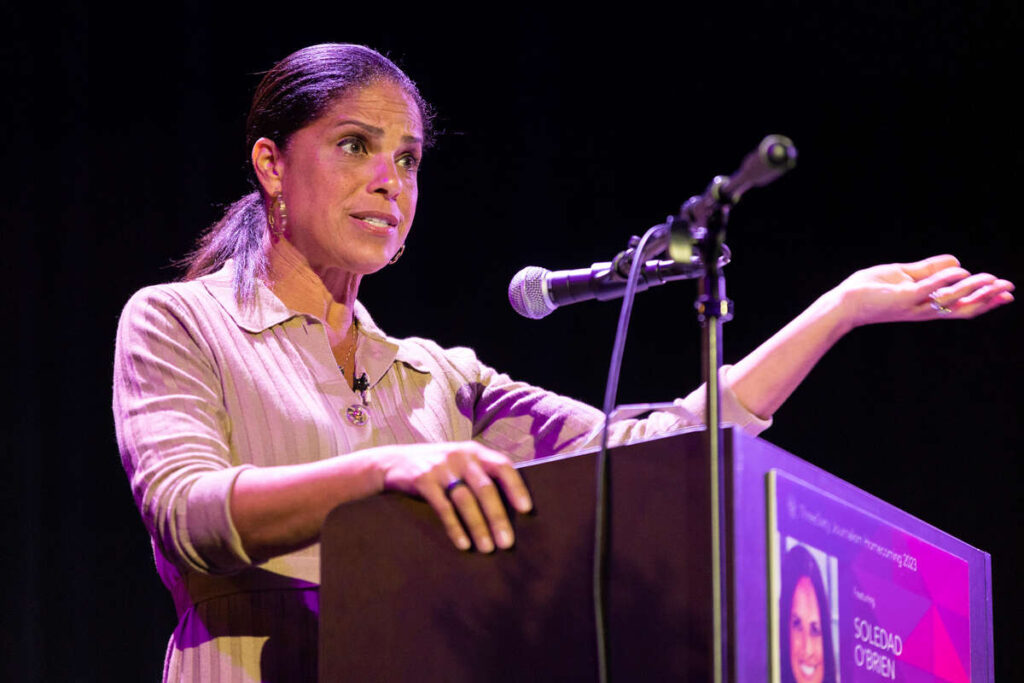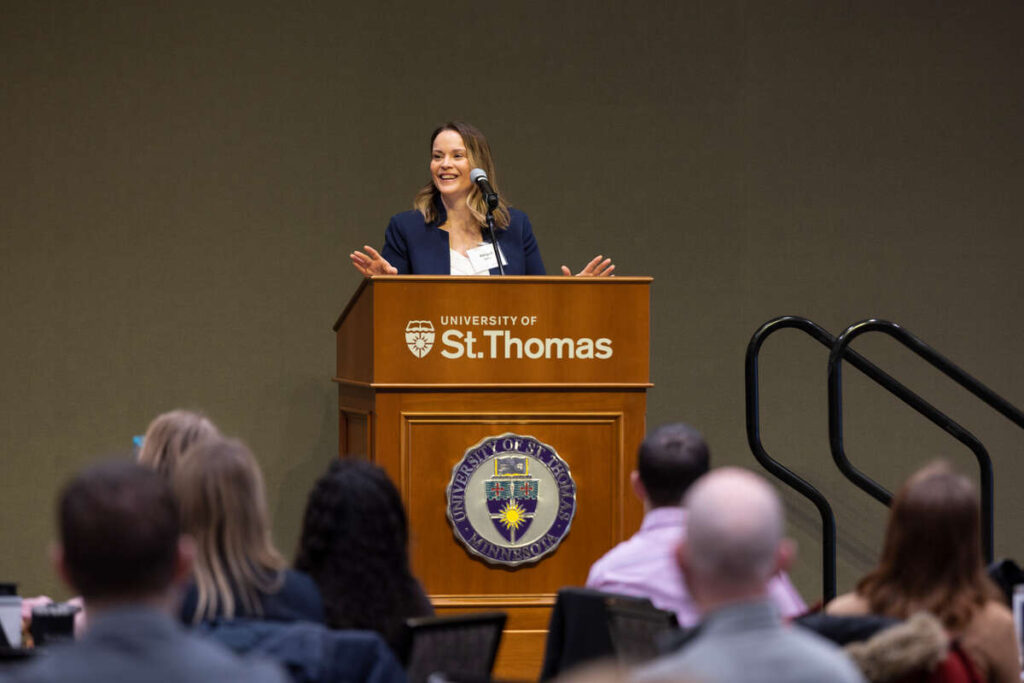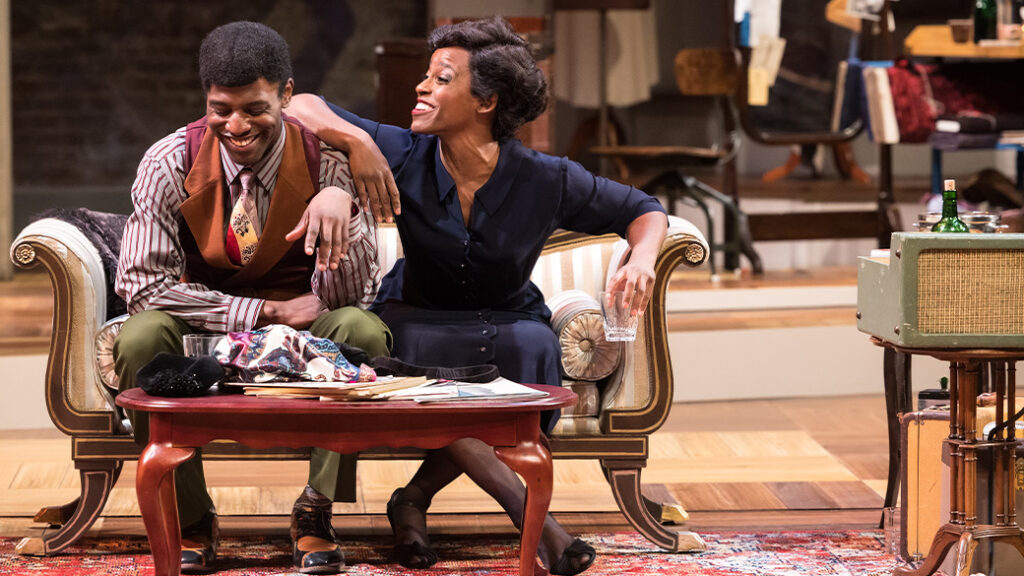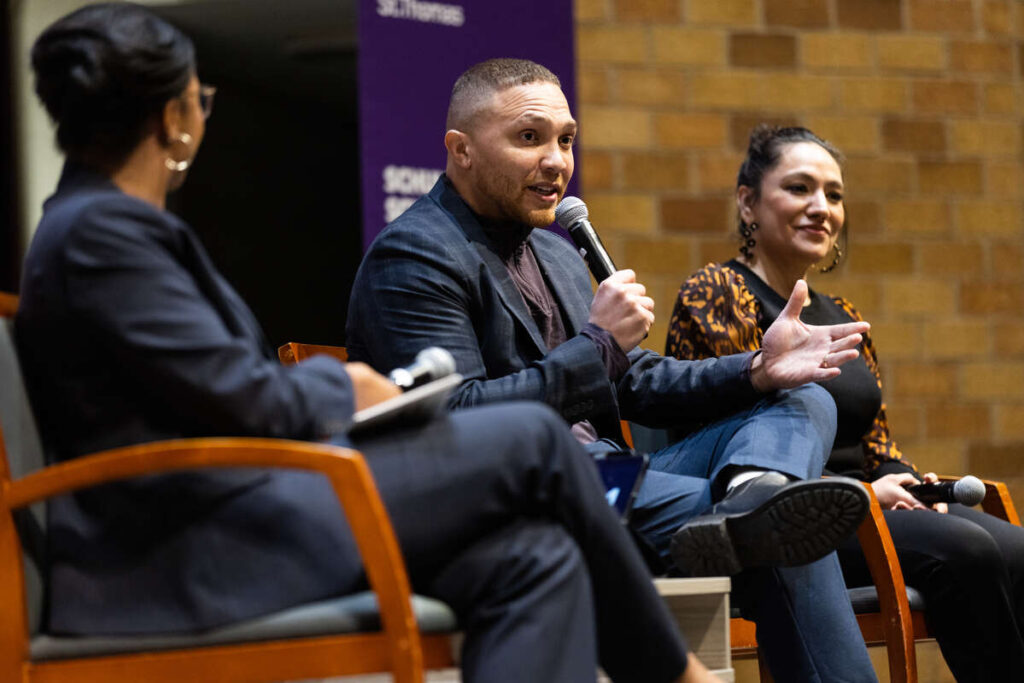Together, Catholic Charities and the St. Thomas Center for the Common Good tackled a pressing issue for many cities, including Minneapolis: How does race play a role in where people live?
Acooa Ellis, director of advocacy at Catholic Charities, led a panel discussion on Monday, which informed an audience discussion. President Julie Sullivan opened the 2018 Sowers of Justice Assembly, highlighting that the event was informed by St. Thomas and Catholic Charities' commitment to Catholic social teaching.
"We have a common mission, we share common principles, we share the same faith-based roots, so we want to work together to expand what we can do as a university ... and what they can do as social services agency, but more importantly, what we can do together," Sullivan said. "What does it mean for the common good if ZIP code and the color of your skin has more power over your destiny than any other factors?"
The event was the first in a growing relationship between the Center for the Common Good and Catholic Charities.
"We’re excited about the relationship with Catholic Charities," said Theresa Ricke-Kiely, executive director for the Center for the Common Good. She said working with Catholic Charities will create opportunities for St. Thomas community members to partner with essential programs across the Twin Cities.
"We particularly want our students to not only understand symptomatic societal problems, but the structural issues that come into play," Ricke-Kiely said. "Students will learn from this vantage point and experience, and help to contribute to the common good."
Here are five observations.
1. This issue is complicated, but don't give up (see No. 5).
Housing and its intersection with race is a topic that can easily and quickly become overwhelming because it has such a long and tangled history. The panelists were open about this, and also that one simple solution wasn't going to solve everything. But, they acknowledged the importance of listening, learning and taking a simple next step.
"The system we created many years ago lives with us today," said Tim Marx, president and CEO of Catholic Charities of St. Paul and Minneapolis. "It is our obligation to deconstruct it, to make it better, to not live with it. It was one that was consciously put together. We designed it and we got the results, which were intended to be created. And now we have to figure out as a community how to do it differently, and that is really hard."
2. Housing segregation was purposeful.
Kevin Ehrman-Solberg, of the Mapping Prejudice Team, gave a historical overview of how segregation developed in Minneapolis over the course of the 20th century. He pointed out that – while it is a common misconception that segregation was a natural part of the way many cities developed – segregation was actually built into many metro areas, such as Minneapolis.
For example, in 1910, Minneapolis was not segregated, but as cities began to ask how to purposefully build "better" cities in the early 20th century, a category that was raised was race.
"The idea is that you have a white neighborhood, it is a good, stable neighborhood," Ehrman-Solberg said. "If African-Americans move in, this is going to decrease property value. It's not because they're bad neighbors or that their median income might be lower, not because of education levels, simply because African-Americans are occupying what used to be white space."
This conflation of race and space played out through discrimination. The Federal Housing Administration had the ability to mark neighborhoods deemed to be bad neighborhoods as poor financial risks, and banks refused to offer loans to these redlined areas. Because African-American neighborhoods were deemed to bad neighborhoods simply because African-Americans lived there, financing was denied to members of that community.
The Mapping Prejudice Team focuses on a lesser-studied form of housing discrimination. In property deeds, it was legal to include racially restrictive covenants, which could stipulate that someone who was not white could not own that piece of property. Because the deed went with the land, even after the property was sold and no longer had any connection to the original owner, that covenant was enforceable by law until 1968 and still can be found on property records.
Little data has been collected on these covenants, so the Mapping Prejudice Team is combing through those in Minneapolis and mapping how they grew across the metro. The team already has mapped over 10,000 of these restrictions and have many more to go.
Redlining and covenants together meant there was not much land in Minneapolis where African-Americans could get financing and legally live, which is what results in black families living in constrained spaces throughout the city.
3. We continue to deal with the history of these policies, and racial discrepancies are still in place.
Much of the panel discussion also centered around how much individual choice plays a role in where people live currently. Shannon Smith Jones, executive director of Hope Community, spoke on how people of color built tight-knit history, and created culture and community in these segregated spaces.
She highlighted how gentrification is a problem because people who have historically lived in these communities are being displaced with rising prices as their neighborhoods become "trendy."
"We cannot have housing conversations without the people who are living in the housing," Smith Jones said.
Adam Belz, a Star Tribune reporter, also spoke on the difficulty of moving to what is considered a "better" area. He wrote a story on Ethrophic Burnett, an African-American woman relocated to Chaska after a lawsuit alleged public housing in Minneapolis perpetuated segregation by race and income.
Burnett spoke to Belz about the difficulty of discrimination and building a network in the largely white community.
“It was fear on my part because here I am in an all-white neighborhood,” Burnett said in the article. “It was fear on their part because here this black woman comes with all her little kids. What’s she trying to do?”
Smith Jones also pointed out that such changes almost always put the burden on those who already are being negatively impacted.
4. Where people live plays a role in their economic mobility.
Belz spoke on a series of articles he wrote that indicated where individuals grow up plays a large role in their possible economic mobility: Those who live in a economically integrated areas, or areas where they're growing up alongside people of different economic backgrounds, have a greater chance of movement. Yet, cities are more segregated by income, meaning it is more difficult to overcome poverty in cities.
The panelists also discussed other regional factors, such as education, that can play a role in economic mobility, and how living in a poor area can restrict access to good schools.
Ehrman-Solberg also discussed the homeownership gap, which is a prominent way families pass along wealth. In Minneapolis, white people are still three times more likely to own a home than African-Americans.
"Gaps like this don't just happen," Ehrman-Solberg said. "This is the result of decades of systemic policies."
5. Even though this issue is complicated, there are immediate steps to help.
With such a whirlwind of information, some participants were curious what the next step was in helping this issue.
The panelists had a few suggestions: Contact elected officials to continue the conversation; find other people, especially those who are not likely to agree with your perspective, and share this information with them; and simply be a good neighbor, especially to those who may look differently than you do.
The Catholic Charities Advocacy Team also promoted signing up for their Sowers of Justice network to learn more, as well as about other issues of social, economic and racial justice that may be of interest to people of faith.
